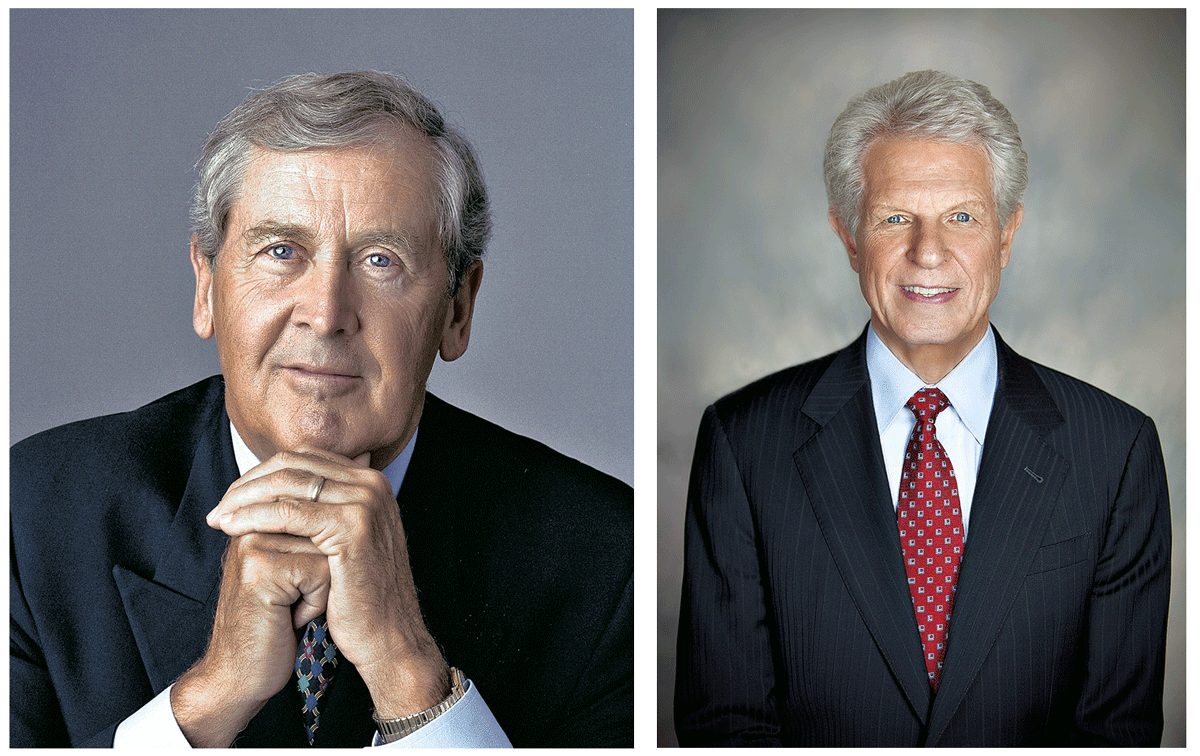Distance is an interesting concept in brand positioning terms. How closely you look to cluster with others and how determined you are to remain some distance away depends on your strategy and what you stand to gain from getting up-close.
The theory suggests that every brand should be looking to put as much daylight as it can between itself and all its rivals. That’s both impractical and untrue in a lot of cases. For a start, all brands in a category have to comply with common standards and regulations that cluster them to a certain extent. Secondly, as products become more and more alike, features and benefits are increasingly about semantics rather than genuine and whopping differences. So the opportunities to create distance on the basis of product excellence are less plentiful than they once were.
Distance therefore is about perceptions. How closely is your brand seen to mirror another, and what do consumers make of that?
Recently, Under Armour announced that they were moving their footwear and design division across country from Baltimore to Portland. That will put them fairly and squarely in Nike country, in an area that has become the hub for footwear innovation. Not only that, but Under Armour has announced plans to essentially out-community the sporting giant by offering to renovate the running track that Nike put down 20 years ago.
Distance: The Strategy
At one level, this looks like a risky move. On the other, Under Armour has much to gain from such a step. It can take it to its biggest competitor in a way that is hard to counter without Nike looking domineering and defensive. It could also gain access to talent it might otherwise have to work much harder to attract, and it gains the credentials of being in a part of the world that is becoming famous for Under Armour’s core business. The clear signal, and it’s a classic challenger signal, is that Under Armour is a player, an innovator and a global force in the making. The move to Portland is a step up into the limelight. Under Armour are looking to position themselves as the champions-in-waiting.
While challengers look for ways to engage their rivals and draw them into competing more on terms that suit the under-dog, or at the very least throw the main player off-balance, the proximity argument often works in reverse for a market leader. They want space all around them. The more space they can gain, the wider and deeper they can project a brand image of podium holder. So they are looking to fend and defend. Typically, market leaders use size, price, innovation and of course marketing to position themselves as the pace setters and the reliable authority. Their preferred position in the market is out-in-front and beyond compare.
Equally, a number 2 will look to put distance between itself and its market leading rival, particularly if they want to position themselves as the alternative. Adidas of course wants nothing to do with Nike in any sense. Nor does Reebok. Or Puma. Others will take positions ranging from value imitator (in which case they want to look like a budget version of the main players), to niche player (where they position themselves specifically and intensely in terms of capturing a particular segment) to national champion (where they position themselves as the company that best understands the local market). Finally, a cult brand often looks to position itself away from others in the market. Whether the brand strategists are willing to admit it or not, all these positions, with the exception of a cult brand, are relative to the position taken and/or owned by the market leader. In essence, they set out the co-ordinates for the sector.
Rise Of The Global Brand Ecosystems
The various positions in themselves are interesting but the stakes have been raised in recent years by the decision by global brands to build out their market presence through integrated ecosystems. In essence, the behemoths are looking to change the competitive landscape from one based on products to one based on a broader consideration set where the products themselves work best with other products from the same brand.
This approach works very well for market leaders. They can position what they offer as separate, distinct and integrated. They can challenge customers to commit and then offer broader rewards for doing so that tie the consumer in more tightly. Such initiatives strengthen the distance that the market leader is looking to put between itself and its rivals. It also invites consumers to do the same. I call this “collect the set”. If you buy Nike for example, there’s plenty more Nike where that came from, with all the reassurance that comes with buying Nike and the tribal recognition of having Nike on your person.
In response, other big players will look to match perceptions of being market leading but may well position themselves differently in terms of other aspects. Patagonia for example looks to take the moral high ground, while The North Face positions itself as grittier and more battle-tested. Both are unmistakably outdoors companies, but using their different personalities to attract consumers who align with their philosophies. Equally, if you’re a national competitor up against a global dominant, the position that is most likely to be effective comes from being seen as the one who is ‘most local’.
If you’re a smaller player, the emergence of ecosystems presents something of a challenge. On the one hand, the smaller players want to present themselves as legitimate choices in their own right. On the other, they often need to show that what they offer integrates and co-exists with what else is in the market so that they are not isolated. The more radical they make the decision to commit to them, the more they stand to gain if things go right, but equally the more they stand to lose if the market judges them as ‘incompatible’. Under Armour clearly has no intention of playing nicely. It’s not just stepping into the lion’s den, it’s rattling the cage as it does so.
How Is Your Brand Positioned?
So positioning is both competitive and comparative. If you’re looking at where you’re positioned right now and what that means, the questions you should be asking aren’t hard, but they are searching:
- “Where do we sit in relation to the market leader?” How closely do you need to mirror the best in the business? What must you be seen to emulate in order to have credibility and where are you looking to shine?
- “What right do we have to be where we are?” What underpins the position you have and the position you take? Where’s the proof points for consumers that you are what you say you are, and why will they be interested?
- “Where are others heading?” What are the positioning dynamics of the sector? Is everyone heading for the same place? If they are, why are you going there too? If you’re not, how are you going to avoid going there and why is that a competitive thing to do?
The Blake Project Can Help: The Brand Positioning Workshop
Branding Strategy Insider is a service of The Blake Project: A strategic brand consultancy specializing in Brand Research, Brand Strategy, Brand Licensing and Brand Education





2 comments
Jerome Conlon
November 2, 2015 at 3:07 pm
Good observations Mark. From my perspective, Nike will pay attention to but not cue off of or worry about what Under Armour is doing. To anchor its brand Under Amour is dedicated to performance positioning with athletes as Nike does. It’s logical for UA to locate one of its design centers for sports in Portland because that is center for global design in the sports and fitness industry and it will make the recruitment of talent easier. Nike has something like 700 full-time designers on board plus Adidas, Columbia Spotter, Jantzen, Keen, Lacrosse, Laika Studios, Ruffler, Salomon Snowboards, ShooGoo, Soloflex…plus a concentration of world class design firms are here like Ziba Design. So there are other factors in play that are causing UA to appear very close to Nike’s brand positioning at the moment. Nike however is quickly moving to become another kind of company than the one it was 25 years ago. Its branded content and character merchandising capabilities are second to none. Its got a much much bigger entertainment and branded content studio system at work. Add 3D On Demand Customized manufacturing to this mix and Nike resembles DreamWorks more than UA, Adidas or any other current sports retailing brands.
Mark Di Somma
November 2, 2015 at 3:44 pm
Jerome – great backstory. Thanks so much for adding. The last thing I would ever expect Nike to do is stand still, but it’s interesting to see UA making the proximity play. Challengers will provoke, and smart leaders will find smart ways to answer – including, perhaps, not responding at all.
Comments are closed.